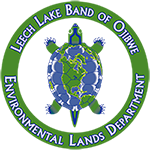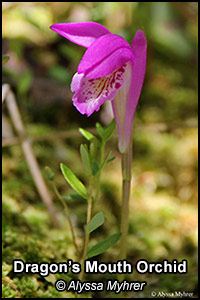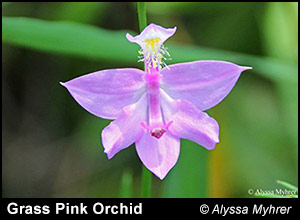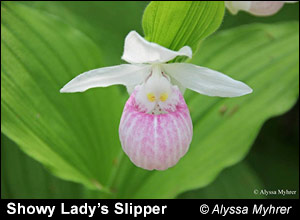 Wetlands, Lakes & Streams
Wetlands, Lakes & Streams
TOPICS:
1. BENEFITS OF WETLANDS
2. UNDERSTANDING WETLANDS
3. TYPES OF WETLANDS
4. WETLAND RESTORATION
5. THERMAL STRATIFCATION IN LAKES
6. LAKE ZONES AND COMMUNITITES
7. GLOBAL WARMING EFFECTS ON LAKES
 1. How Your Watershed Can Benefit With Wetlands
1. How Your Watershed Can Benefit With Wetlands
Wetlands are a key link in watershed management. The role that they play in our watersheds is critical to protecting water quality and moderating water quantity. Wetland habitat serves as home for many plants and animals. Even the national—and in many areas the local—economy has a significant connection to wetlands.
Essentially wetlands are the transition between dry land and water (streams, rivers, lakes, and coastlines), wetlands take many forms including the familiar marshes, swamps and bogs. Yet, not all wetlands are "wet" year round. These "drier end" wetlands also perform significant wetland functions. Yet, these are often the target for many uses including agricultural and urban/suburban uses.
7 Ways your Watershed Can Benefit:
1. Improve water quality by breaking down, removing, using or retaining nutrients, organic waste and sediment carried to the wetland with runoff from the watershed.
2. Reduce severity of floods downstream by retaining water and releasing it during drier periods.
3. Protect stream banks and shorelines from erosion.
4. Recharge groundwater, potentially reducing water shortages during dry spells.
5. Provide food and other products-such as commercial fish and shellfish-for human use.
6. Provide fish and wildlife-including numerous rare and endangered species-food habitat, breeding grounds, and resting areas.
7. Increase opportunities for recreation-bird watching, waterfowl hunting, photography-and outdoor education.
Why consider wetlands in your watershed?
Without wetlands, we can expect an increase in flooding, decrease of animal, plant and bird species, increase in erosion, decrease in water quality, and lost revenue.
Vegetated riparian wetlands in agricultural areas have proven to remove high percentages of phosphorus and nitrogen from runoff water. Without these wetlands, increased nutrient loading to rivers, streams and lakes could result in algal blooms and over-abundant aquatic plant growth. When these algae and plants die, oxygen in the water is used during the decomposition process. This can result in oxygen deprivation, which may lead to fish kills.
When agriculture and development practices impact wetlands, the water storage and flood control capacity of the land decreases, increasing the likelihood of costly flood damage downstream.
Wetland benefits
Wetlands are valuable systems that provide many benefits to your watershed including:
Reduced water treatment costs
Wetlands can help improve water quality by removing or retaining nutrients, organics, and sediment carried by runoff. The flow of water slows as it enters a wetland, which causes sediment in the water to settle out. Many chemicals — fertilizers, human and household wastes, toxic compounds —are tied to sediment and trapped in wetlands. Plants and the biological processes present in a wetland breakdown and convert these pollutants into less harmful substances. By restoring and utilizing wetland functions, we can reduce the costs of constructing, operating and maintaining drinking water treatment plants.
Increased groundwater availability
Wetlands "soak up" water during and after a rainy spell. While wetlands "hold" most of the water, some water makes its way to the groundwater supply. Thus wetlands often fill the vital job of recharging groundwater so it’s available for use at a later date.
Reduced flood damage
Another way wetlands are valuable to humans is their influence on the flow and quality of water. Wetlands often act like giant sponges, soaking up water that runs off the land. This feature can help slow floodwaters, lower flood heights and reduce shoreline and stream bank erosion. Preserving natural wetlands can reduce or eliminate the need for expensive flood control structures.
Food and related industries
The vast majority of our nation’s fishing and shellfishing industries harvest wetland-dependent species. This catch is valued at $15 billion a year. Commercial fishermen harvested nearly ten billion pounds of fish in 1996.
EPA estimates suggest that 98% of the Gulf of Mexico fishing industry harvest comes from fish and shellfish that are dependent on in-shore wetlands. The US Department of Commerce reports that 438 million pounds of brown, white and pink shrimp were harvested in 1995 and 1996 (combined). This was worth more than $838 million dockside.
Other wetland-reliant products include cranberries, blueberries, wild rice, medicines, pelts and timber.
Diverse plants & animals
Wetlands contribute to diversity by providing food and habitat that supports a wide variety of plants and animals. Detritus—enriched organic material formed by the decay of plant and animal material in water—is food for insects, shellfish and forage fish. In turn, fish (such as striped bass and bluefish), mammals, reptiles and amphibians feed off of the insects and forage fish. The growth of wetland plants and algae is also nourished by nutrients the provided in the detritus.
Wetland plants provide food and shelter for fish and animals. Wetland-dependent mammals include: muskrat, beaver, moose, raccoon, bobcat, rabbit, and white-tailed deer. Bald eagles, ospreys, hawks, egrets, herons and kingfishers are just a few of the birds that thrive in wetlands. The high biological productivity of wetlands makes them vital ecosystems not only to the plants and animals that directly depend on them for food and shelter, but to humans as well.
Recreation
Revenue is also generated from waterfowl hunters in search of wetland-dependent birds. The 1996 National Survey of Fishing, Hunting, and Wildlife-Associated Recreation reported 3.1 million adult Americans hunt migratory birds. This includes hunting for geese, ducks, doves, and other game birds. They spend about $1.3 billion on travel, equipment and other associated expenses.
Another recreational outlet is trapping. An EPA report puts the nation’s harvest of muskrat pelts worth over $70 million annually. This, of course, does not include the value of beaver, mink or reptiles such as alligators.
The natural beauty and solitude found in wetland areas provides opportunities for bird watching, wildlife photography, painters, hikers and simply relaxing while appreciating the wonders of nature. For many people, wetlands are a vital part of their lives providing a peaceful place to reflect while escaping from the everyday stress and strains.

2. UNDERSTANDING WETLANDS How wetlands form.
The formation and role of a wetland is driven by its location in the watershed, the presence of water during significant periods, soil quality and, ultimately, plants and animals. In fact, soils and plants act as "identifiers" for each wetland.
As sediment is deposited along river corridors, opportunistic plants and animals seek out the new habitat and flourish. As these areas mature, the soils change which impact the variety of plant and animal species. Thus new species may colonize. This process is called succession.
At the mouths of rivers (where a river meets the ocean) sediments are often deposited forming alluvial plains. Marsh grasses find these areas desirable. In addition, other plants and many animals are then attracted to these deltas.
Other wetlands are formed by aging lakes that fill-in with sediments. This area supports shrubs and trees adaptable to life in a wet environment.
Sustainable Wetlands depend on:
• Understanding how the parts integrate into the whole system.
• Treating the root of existing problems not just manifestations.
• Understanding nature’s boundaries
• Learning to live in balance with natural systems.
• You!
3. TYPES OF WETLANDS
The diversity of wetland habitat makes the identification and classification of wetlands challenging. Wetlands are identified and classified according to the types of plants, soils, hydrology or patterns of water, and fish and/or wildlife communities present.
Swamps, marshes and bogs are easily recognizable types of wetlands. Other types of wetlands may be less well known because the amount of water present will vary seasonally, with specific rainfall events or with snowmelt.
The plants that live in wetlands are particularly adapted to soils that are saturated with water and, at times, contain little oxygen. These plants, such as marsh grasses, are called hydrophytes (literally water plants) and the soils where they thrive are referred to as "hydric soils." Some basic types of wetlands are:
Riverine Bottomlands/Hardwood Forests
Riverine Bottomlands/Hardwood Forests: Found along the river corridors, these provide water storage during times of peak precipitation, reducing floodwater and then slowly releasing the stored water. Silver maple and cottonwood are common in northern regions. Bald cypress and tupelo dominate southern regions.
Northern Bogs
Northern Bogs: Saturated areas with mossy carpets and shrubs, grasses and stunted spruce trees. These cool wetland areas produce wild cranberries, harvested in autumn. Bogs affect the climate by storing carbon dioxide in decaying plant materials (peat), thereby reducing its release into the air.
Cypress Swamps
Cypress Swamps: Also known as domes, these are characterized by tall cypress trees growing in the center of the swamp. The trees filter pollutants like nitrates and phosphates that reach the swamp via water runoff.
Coastal Marshes
Coastal Marshes: Influenced by the tides, these highly productive ecosystems support the majority of fish and shellfish harvested. These wetlands provide feeding, spawning and nursing areas for a multitude of invertebrates, birds and fish.
Prairie Potholes
Prairie Potholes: Formed by receding glaciers that produced shallow depressions which seasonally fill with water, these are a favorite breeding and feeding area for North American ducks. These wetlands also play an important role in recharging freshwater aquifers.
Runoff threats
While wetlands can reduce the impact of some pollutants, too much pollution will negatively impact the wetland. Thus, the quality of a wetland is dependent on the water flowing into them...and the pollutants that the water carries with it from activities in the watershed.
Runoff, originating with rainfall or snowmelt that contains pollutants—oil, grease, fertilizers or pesticides—is called nonpoint source pollution. In addition to the potential of runoff polluting wetlands, it also can pollute other surface waters such as lakes, rivers, and oceans. Eventually it can reach groundwater, which is often used for drinking water.
The best way to protect the quality of wetlands is for every person in the watershed to prevent potential pollutants from being carried by runoff or infiltration.
Other wetland threats
The loss of the values provided by wetlands impacts watershed residents, plants, and animals. Filling in one acre of wetland may not seem devastating. Yet, the cumulative affect threatens the value of remaining wetlands and impacts the entire watershed...residents, plants, animals, water quality and quantity. Already more than half the wetlands in the lower 48 states have been destroyed. Some of the causes are listed below:
Naturally occurring events—hurricanes, droughts, erosion, drops in groundwater levels—destroyed or severely threatened some wetlands.
Agriculture production Agriculture production is responsible for many drained wetlands.
Marinas, housing, roads and other urban structures Marinas, housing, roads and other urban structures were built on filled wetlands.
Dams and dredging Dams and dredging nearly always affect the flow of rivers and lakes, destroying some wetlands and threatening others.
There are numerous other threats, however those listed above are the most common.
Twenty-two states have lost at least 50% of their original wetlands since the 1780s. Seven states—Indiana, Illinois, Missouri, Kentucky, Iowa, California and Ohio—have lost over 80%. Since the 1970s states with the most losses are Louisiana, Mississippi, Arkansas, Florida, South Carolina and North Carolina. Wetlands drained for agricultural purposes have been reduced while development continues to account for a larger percent.

4. Restoring & Managing Wetlands
Preservation and protection is the most economical way to "manage" wetlands. Of course, this isn’t an option for the millions of altered wetland acres. In these areas, restoration is often the best solution to meet a watershed partnership’s goals.
10 Good Reasons to Restore Wetlands:
• Re-establish native vegetation...a sustainable food source for wildlife.
• Provide breeding grounds for waterfowl.
• Connect wildlife corridors for ease of movement and healthy interactions.
• Reduce downstream flooding.
• Reduce streambank and shoreline erosion.
• Protect fish and shellfish harvests.
• Restore natural biological diversity.
• Improve water quality.
• Enhance threatened and endangered species.
• Provide recreational and educational sites.
What is restoration?
"Restoration" is the process of returning the wetland system to an approximation of its pre-disturbed condition.
This does not mean returning all altered wetlands to their unaltered state. It simply means replacing the lost values with newly created or "restored" wetlands. In other words, the goal is to restore the value rather than restore a particular site with a self-sustaining system that requires little human "management."
Considerable advances have been made in large-scale wetland restoration. Yet, restoring wetlands to their original condition—replicating the complex and diverse physical, chemical, and biological interactions—hasn’t been well documented.
The restoration goal
The major challenge of restoration is the replacement of the structural and functional aspects of a naturally formed wetland. A "restored" wetland should look naturally formed. It should also support values—the array of biological, chemical and physical processes and interactions—found in the naturally created wetland.
The intensity of restoration techniques will depend on the level of disturbance to the values of the original wetland.
Restore water flow. Restore water flow. The first step in the process is to restore the hydrology (flow of water) to support conditions favorable for the return of wetland plant communities. The approach used is dependent on what caused the initial disturbance.
Altered flow:
- Re-establish flow of a river back into a wetland area.
- Remove dams or other structures that cause flooding of a wetland.
Filled or dredged:- Re-establish original landscape.
Re-establish plants.
The next step is planting appropriate native plants. If the soil has been contaminated by toxic chemicals, it will likely need to be removed. If successful, a diverse and balanced plant community will establish itself. Then wildlife will colonize.
What you can do if you own a wetland
Before clearing, draining or manipulating wetland areas—including areas which you’re unsure about—contact one of these government agencies. If the wetland area is used as cropland, contact your local USDA Natural Resources Conservation Service (NRCS) office. In non-cropland areas, check with your U.S. Army Corps of Engineers district (under U.S. Government in the Yellow Pages).
How to get started
Successful restoration of wetlands is possible by implementing comprehensive conservation plans along with watershed protection strategies developed by a partnership of public and private sectors. In addition to NRCS and the Army Corps of Engineers, the U.S. Environmental Protection Agency and the U.S. Dept. of Interior are also involved in protecting and restoring wetlands. Other agencies that often participate include tribal, state, regional, and local government agencies.
Government and watershed residents must work together to determine how wetlands fit into their watershed, the values (roles) of wetlands, and how to best protect and restore these values. Then each public and private partner needs to do their part in making it happen.
Some activities:
- Locate wetlands and study how they interact with the watershed.
- Bring together people concerned with wetlands in your watershed.
- Improve understanding of the systems and current and future pressures.
- Promote values of wetlands and be aware of potential threats.
- Coordinate wetland protection plans at all levels: local, state, regional, and federal.
- Build nest structures to increase nesting of Canadian geese, mallards, wood ducks, and other birds.
- Plant food plots to increase survival of pheasants and other wildlife.
- Plant native wildflowers to add color and habitat for songbirds, mammals, butterflies, and other insects.
- "Adopt A Wetland." Call 800-832-7828.
- Help local schools adopt a wetland, maintain it and learn about it.
LAKES
A lake is an ecosystem, a biological community of interaction among animals, plants and chemical environment in which they live. A body of water is classified as a lake when it comprises of at least ten acres in surface area and greater than six feet deep at some point.
Lakes in the temperate region tend to form layers: the epilimnion, metalimnion and hypolimnion.
- Epilimnion: The warm upper layer in a lake
- Metalimnion: The middle layer of a thermally stratified lake or reservoir. In this layer there is a rapid decrease in temperature with depth
- Hypolimnion: —The lowermost, non-circulating layer of cold water
5. Thermal stratification
Lakes go through a seasonal process known as thermal stratification. This process occurs as the water column separates into layers due to differences in temperature and density. During late fall and much of winter after the water has cooled, lake temperature, and therefore water density is fairly uniform top to bottom. As spring approaches, the upper water layer (epilimnion) warms and becomes less dense, eventually becoming thermally isolated from and virtually floating on top of the cooler, denser, deeper water layer (hypolimnion). The layers are separated by a middle transition layer know as the metalimnion. As the temperature difference between the water at the top of the lake and the bottom increases, the density differences increase and thermal stratification becomes more pronounced through the summer. The upper and lower layers of water no longer mix and the water chemistry becomes different in each layer.
6. Lakes are also divided into zones or communities
- Littoral zone: region along shore. This zone is home to most of the aquatic plantlife (both rooted and floating) in a pond or lake because the high amount of sunlight reaching it allows for significant photosynethic activity.
- Limnetic zone: open surface waters farther from shore in a lake. It is often defined as the area where the lake bottom is too deep to support rooted aquatic plants due to insufficient sunlight. This area is occupied by a variety of phytoplankton (algae) and zooplankton (microscopic animals), crustaceans, and fish. Most photosynthesis takes part in this part of the lake.
- Profundal zone: The area of deep water at the bottom of a lake below effective penetration of light.
Physically, chemically and biologically parameters can be measured in any body of water to analyze trends in water quality analysis, such as, turbidity, total phosphorus, total Kjeldahl nitrogen, conductance, temperature, dissolved oxygen, chlorophyll-a, fish, aquatic plants, phytoplankton and zooplankton and benthic organisms.
7. Global warming affects on lakes
Global climate change will eventually affect area lakes in various aspects, although most noticeable changes will be in climatic events, such as more evaporation and heavy rain events, which will cause more runoff events, poor water quality and erosion.
Increase in heavy rain events leads to:
- Shoreline erosion
- Intensity of rainfall will produce more pollution and sedimentation due to runoff. More phosphorus-bound sediments will wash into streams and lakes
- Flooding- large volumes of water can transport contaminants into water bodies and also overload storm and wastewater systems.
Increases in air and water temperatures:
- Increases oxygen-consuming biological activities within the lake ecosystem. Stress from global warming may eliminate coldwater species, open niches for other exotics, alter yields, and disrupt traditional fisheries.
- Decreases the saturation concentration of dissolved oxygen (less oxygenated waters). Since higher temperatures reduce dissolved oxygen levels, climate change will effect the survival of aquatic life. Higher temperatures and lower oxygen concentrations may contribute to an increase the uptake of contaminants, such as, mercury through the food web. (Yediler and Jacobs, 1995).
- Prolonged summer stratification period
- Ice cover on Minnesota's lakes will indicate a shorter ice-on season.
- Stream flows will peak sooner in the spring because of earlier snowmelt and ice breakup. Fresh water flowing into these lakes could decrease with global warming, potentially reducing lake levels and degrading water quality.
- Increased lake evaporation could have major effects some larger lakes.
- More frequent and intense rainfall may overwhelm various pollution control facilities that have been designed to reduce sewage overflows and stormwater runoff.
- Since the metabolic rates of organisms and the overall productivity of ecosystems are directly regulated by temperature these lake/ river ecosystems are very vulnerable to climate change because projected increases in temperature are expected to disrupt present patterns of plant and animal distribution in aquatic ecosystems.
- Global warming will also affect species composition, abundance and distribution. For example, temporary or ephemeral wetlands may disappear which will greatly affect North American waterfowl breeding areas, food supply and water. In addition, warm-water fish species, such as, carp will increase, while cold-water species will decrease (trout and whitefish).
- Warmer waters are naturally more productive, but the particular species that flourish may be undesirable or even harmful. For example, algae blooms occur in many lakes during warm, nutrient-rich periods and may increase in frequency in the future. Large fish predators that require cool water may be lost from smaller lakes as surface water temperatures warm, and this may indirectly cause more blooms of nuisance algae, which can reduce water quality.
- Species that are isolated in habitats near thermal tolerance limits or that occupy rare and vulnerable habitats may become extinct.
Contact Us
(218) 335-7400 DRM
| Name | Title | Phone |
|---|---|---|
| Brown, Levi | Environmental Director | 335-7417 |
| Harper, Jeff | Water Resources Program Manager | 335-7415 |















 Division of Resource Management
Division of Resource Management